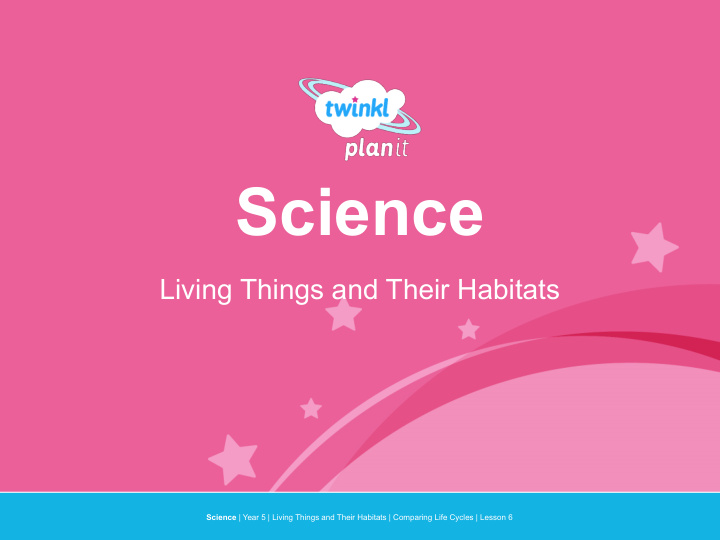



Science Living Things and Their Habitats Year One Science | Year 5 | Living Things and Their Habitats | Comparing Life Cycles | Lesson 6
Aim • I can compare the life cycles of plants, mammals, amphibians, insects and birds. Success Criteria • I can identify the stages of a bird’s life cycle. • I can describe the similarities and differences between different plants’ and animals’ life cycles.
What is an Egg? All species of birds lay eggs. If the eggs are fertilised, they will contain the bird embryo, which will develop inside the egg until it is ready to hatch. The chicken eggs that people eat are not fertilised, so they do not contain baby chickens. However, we can explore chicken eggs to find out more about them. What parts of an egg can you name? Tell your partner.
What is an Egg? Look closely at the outside of Now crack it open. What parts your egg. What is this part of of the egg can you identify? the egg called? What is it for? What is their function?
Parts of an Egg Can you identify all these parts in the egg you have cracked open? Chalaza - Cords that Shell membranes - The keep the yolk in the inner and outer shell centre. membranes separate to form the air cell. Germinal disc - If an egg is fertilised, the sperm enter through the Shell - Protects the germinal disc and travel inside of the egg. It to the centre of the yolk, contains thousands of where an embryo is small holes to allow air formed. to move through the shell. Albumen - The albumen Yolk - Contains proteins is made of water and and fats that provide the protein. It cushions the main source of nutrition yolk and provides for the embryo. nutrition for a developing embryo.
Life Cycle of a Bird The egg is a key stage in the life cycle of a bird. Can you put all the stages in order to show the life cycle? The egg The adults A fertilised hatches, and mate and egg is laid by the adults reproduce. the female. provide food for the chick. The young bird The chick leaves the nest grows and and continues develops. to grow into an adult.
Life Cycle of a Bird A fertilised The egg The adults egg is laid by hatches, and mate and the female. the adults reproduce. provide food for the chick. How did The young bird The chick you do? leaves the nest grows and and continues develops. to grow into an adult.
Comparing Life Cycles Different plants and animals all have different life cycles. Their life cycles share some similarities and have some differences between them. Watch this clip to see which stages of the life cycles of living things you can spot. http://www.bbc.co.uk/education/clips/zp62tfr
Life You will take on the role of wildlife documentary presenters. You have been asked to narrate a programme called 'Life', all about the life cycles of different living things and the way they reproduce. Make sure you include the life cycles of plants, mammals, birds, insects and amphibians. Work with a partner to write your script, then perform it to an audience. You may be able to perform alongside a film or the clip you have just watched.
Sharing Success Now that you have performed your narration to your audience, you should feel very proud! Think of three things you are proud of about your performance. Did you speak confidently? Are you proud of your learning? Was your performance filled with interesting facts? Go around the classroom and tell your classmates what you are proud of! Listen to your friends tell you about their successes!
Aim • I can compare the life cycles of plants, mammals, amphibians, insects and birds. Success Criteria • I can identify the stages of a bird’s life cycle. • I can describe the similarities and differences between different plants’ and animals’ life cycles.
Recommend
More recommend